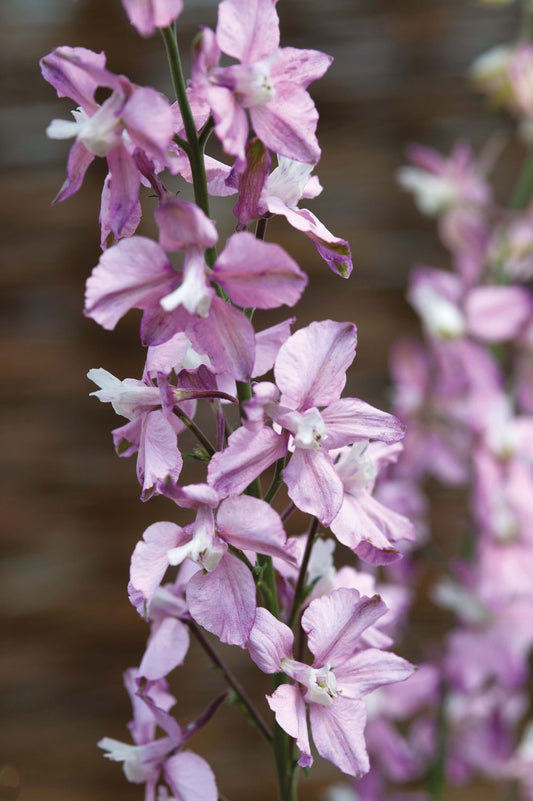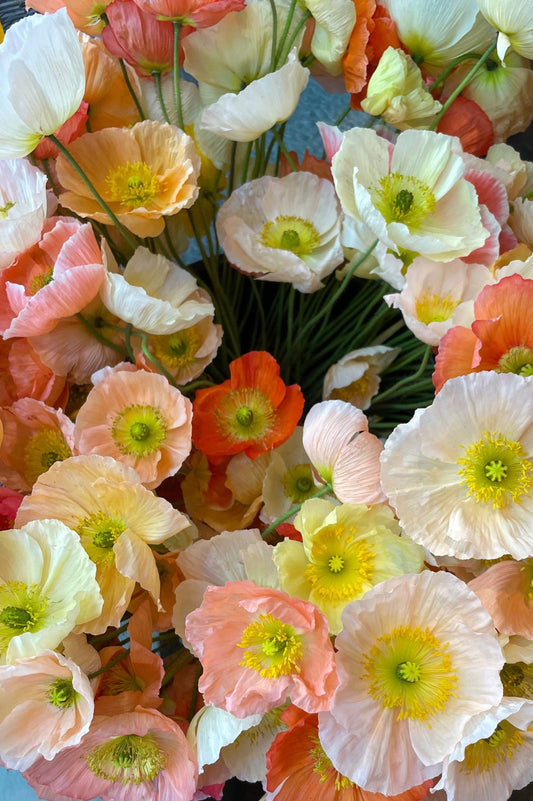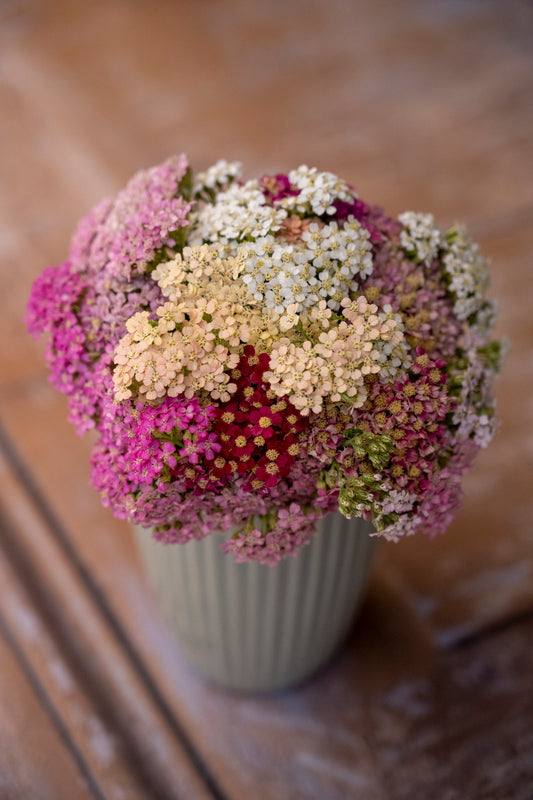COOL FLOWERS – Only the tough ones get into the garden
It wasn't all that long ago that I stumbled upon Cool Flowers (Hardy Annuals). A little-known "concept" here, even though nature shows us the way every year. And for me, it's yet another wonderful demonstration that you never stop learning in the garden. You can find the video about Cool Flowers HERE .

Snapdragon Potomac Lavender
And the best thing about them? NOW, when your propagation fingers are itching the most, and you're eagerly circling perennial catalogs, seed packets, and egg cartons because it's still too cold to get started, THAT'S the time to sow Cool Flowers (at least indoors).
WHO ARE YOU, HARDY ANNUALS?
Hardy annuals are annuals that not only survive the cold, but thrive on it. The plants can be planted in fall or early spring (depending on the region). Depending on the variety, they aren't affected by frost; in fact, the cold hardens them. This allows them to develop a strong root system and thus bloom significantly earlier than their later-planted counterparts.

Cornflower Classic Fantastic
The concept of hardy annuals is particularly popular in England. This may be due to the fact that winters there are somewhat milder than in our latitudes. Consequently, one doesn't have to worry quite as much about tiny baby plants braving frosty temperatures (and they do!). The term "cool flowers" was probably coined most by American cut flower farmer Lisa Mason Ziegler, who has been deeply involved in this field for years. Cool flowers are hardy annuals that are planted in the fall or early spring (in very cold climes) and overwinter as small plants outdoors in the beds until they burst into full force in the spring.

A flowering wonder, the variegated sage ! It blooms forever, sometimes well into December. And can they really endure it? Yes, they really can. When cornflowers, snapdragons, and the like self-seed, the seeds naturally fall on fertile soil in late summer. And when these seeds begin to germinate, the young shoots must be able to withstand cold and frost.

The wonderful Orlaya Grandiflora (Sunflower Broadleaf) – native, but almost extinct in the wild (red list!). Do something to preserve biodiversity and get it HERE .
HOW TO SOW COOL FLOWERS CORRECTLY
Sow in late summer or late winter. Try both and PLEASE tell me about your experiences! As a general rule, you can say:
- Hardy annuals can be planted 6 to 8 weeks before the first frost or 6 to 8 weeks before the last frost.
- Accordingly, they can be sown about 6 weeks in advance.
- Sow directly outdoors for autumn planting (but also indoors if it is very hot in summer).
- When sowing for spring planting, I recommend starting indoors (especially in early spring) (except for varieties that should go outside straight away, see below).
I love this time of year, when it's still too cold outside to garden, but the longing is already so great that I can at least get started in the cozy warmth. (Most) seeds simply germinate faster because they need a bit of warmth first.

Yarrow Summer Berries
There are some varieties that are completely frost-hardy, such as cornflowers, yarrow, and Iceland poppies. Others need a bit of protection in harsh winters, ideally with fleece. These include snapdragons , stocks, radiant peas , and sweet peas . You can use egg cartons, small pots, sprouting tablets, toilet paper rolls, drilled cans, or whatever you like as containers. Potting compost is recommended as it is low in nutrients and sterile. Ideally, you should place the pots on a heating mat; this ensures the right germination temperature and prevents excessive moisture and thus fungal infections. But it will work without it too, although the germination rate may not be as high (you'll need to ensure good ventilation in that case). I don't use any because I don't have one and it's warm enough inside.
I think a grow light is almost more important (especially if you're starting very early). I got some a few years ago and have had better, healthier seedlings ever since. Indoors, they should get 16 hours of light. But even here, you can do without it in a pinch. A bright spot on the windowsill is key. And to prevent your little ones from stretching too far toward the window, place them in a cardboard box, cut off the side facing the window, and stick aluminum foil on the other side. This will reflect the light.

Field larkspur ( Fancy Belladonna) – a wonderful food source for beneficial insects. When your young plants are about 10–15 cm tall, they can be moved outside. Please harden them off slowly and allow them to acclimate to the new ambient temperature, sun, and wind for a few days. An open garage or garden shed is ideal for this. Protect them with fleece for the first two weeks until they have established roots.
These belong to the robust annuals:

Blue Monday Sage

Cornflower Polka Dots

Sweet Pea Lavender

Mohn Bridal Silk

Sweet pea Cupani

Field Larkspur Fancy Purple Picotee

Cornflower Black Ball

Baby's Breath Monarch White

Sweet Pea High Scent
For more information, just click on the images above.
- Snapdragon
- feverfew
- marigold
- Stocks
- Wild carrot
- Bishop's weed
- Irish shell flowers
- Phacelia (bee friend)
- Black-eyed Susan
- Corn cockles
- dill
- thimble
- Pansies
- Strawflowers
- Statice/Sea Lavender
If you want to sow sweet peas , you can find all the information HERE .
And these flowers should be sown directly outside :

Cornflower Mix Polka Dots
Many of these flowers are available in the SHOP . If your desired flower is sold out, simply click the "Notify Me" button – I can get most of them back in stock.
AND: I'm curious to hear your experiences. I look forward to receiving your emails! Just write to blumenglueck@mycottagegarden.de

And finally, one of my most beautiful and beloved: The ornamental carrot Purple Kisses
If you want to read more on this topic, I recommend the book "Cool Flowers" by Lisa Mason Ziegler (unfortunately not yet translated). It was also the basis for this post.

All photos except for Field Larkspur Fancy Belladonna: Janina Laszlo. Fancy Belladonna: Mr. Fothergills.





































